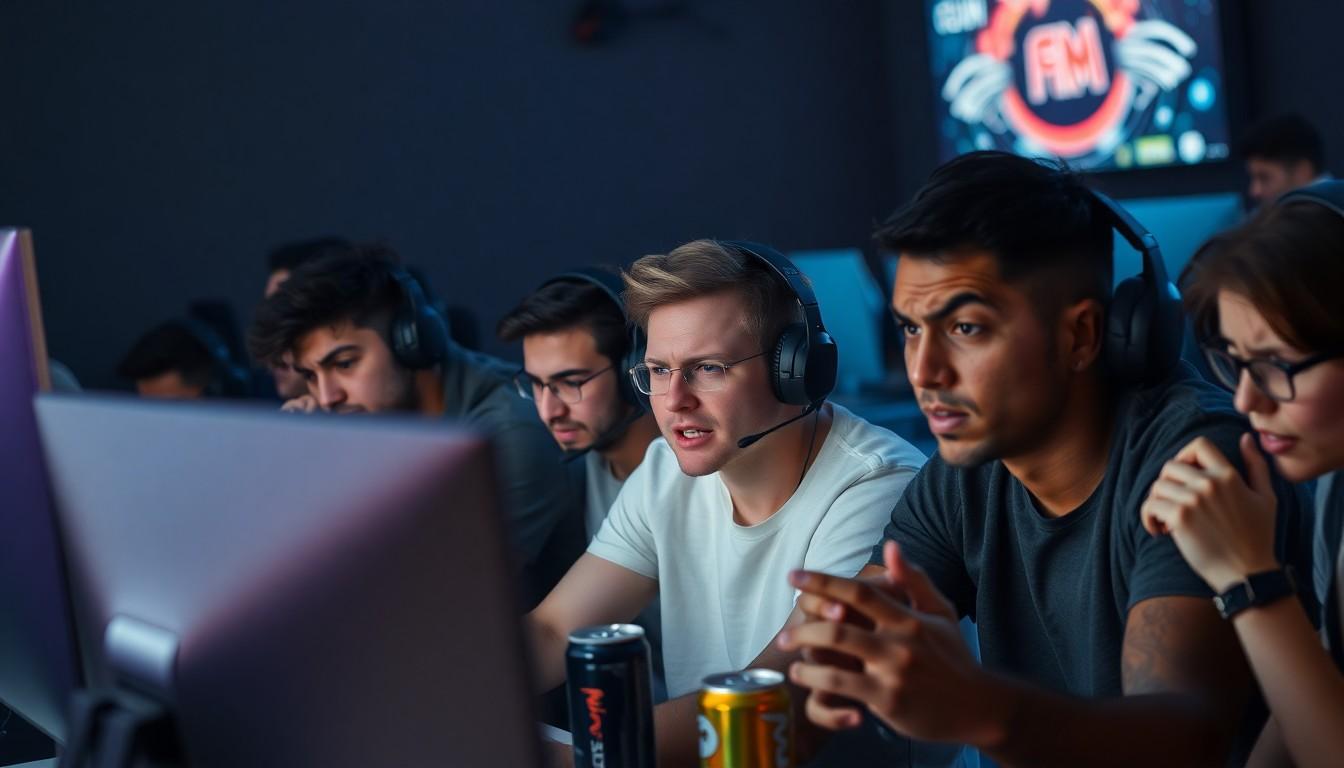In the vast universe of gaming, players often find themselves battling more than just in-game foes. Welcome to the wild west of online gaming, where the toxic community lurks behind every digital corner, ready to ambush unsuspecting gamers with insults and negativity. It’s like stepping into a virtual gladiator arena, but instead of swords, players wield keyboards and a side of snark.
Navigating this toxic terrain can feel like trying to defuse a bomb while being pelted with tomatoes. But fear not, because understanding the roots of this toxicity is the first step toward reclaiming the joy of gaming. From keyboard warriors to rage quitters, the characters in this saga are as colorful as they are frustrating. Let’s dive into the chaos and uncover what fuels this toxic atmosphere, and how gamers can rise above it all.
Toxic Gaming Community
Toxic gaming communities create an environment where negativity flourishes, impacting players’ experiences. Recognizing this toxicity is essential to navigating and improving gaming interactions.
Definition of Toxicity in Gaming
Toxicity in gaming refers to behavior that harms others, often manifesting as insults, harassment, or bullying. This conduct can range from verbal abuse during games to persistent negativity in chat forums. Examples include name-calling, shaming players for mistakes, and using hate speech. Such actions contribute to a hostile gaming environment, making the experience unpleasant for many.
Characteristics of a Toxic Gaming Community
Several traits define a toxic gaming community. Frequent use of derogatory language occurs, alongside consistent harassment of players. Gamers often witness gatekeeping, where experienced players discourage newcomers. Additionally, blaming others for losses proliferates, creating a culture of hostility. Lacking support systems, these communities fail to promote positive interactions and inclusivity. These characteristics contribute to a toxic atmosphere, leading to long-term detrimental effects on players’ mental well-being.
Causes of Toxic Behavior
Understanding the causes of toxic behavior in gaming communities reveals crucial insights into its prevalence. Multiple factors contribute to this negativity.
Anonymity and Online Disinhibition
Anonymity often leads to online disinhibition. Players may engage in toxic behavior when they believe their real identities remain hidden. This detachment removes the fear of accountability. Gamers might feel emboldened to express negativity or insult others without facing real-world consequences. Escaping social norms contributes to this damage. Emotional detachment from their words fosters a culture of hostility, making it easier for individuals to engage in harmful actions. As a result, online interactions can devolve quickly into personal attacks and harassment.
Competitive Environment and Pressure
Competitive environments foster high levels of pressure among players. Striving for recognition or victory can create tension. Players feel compelled to perform well, leading to frustration and anger when expectations aren’t met. This pressure often manifests as blame towards teammates or adversaries. Competitive stress frequently drives individuals to lash out at others, resulting in retaliatory toxic behavior. A lack of support systems further exacerbates this issue. Gamers may turn aggressive instead of seeking collaboration, intensifying the toxic atmosphere within the community.
Effects on Players
Toxic gaming communities significantly affect players, leading to various negative consequences. Players often experience heightened stress and anxiety due to constant negativity.
Mental Health Implications
Exposure to a toxic environment contributes to feelings of depression and loneliness. Players may turn to avoidance, leading to reduced interaction with gaming communities. Increased aggression can also manifest, creating a cycle of toxicity. Studies indicate a direct correlation between toxic interactions and declining mental health. Gamers frequently report feeling demoralized, resulting in diminished self-esteem.
Impact on Game Enjoyment
Enjoyment of gaming decreases as players encounter harassment and insults regularly. Competitive play, instead of being exciting, transforms into a source of dread. Players may disengage from the community altogether due to negative experiences. The pursuit of enjoyment turns into a struggle against toxic behavior. Ultimately, fostering collaboration and positive interactions becomes essential for restoring the joy of gaming.
Strategies for Improvement
Tackling the issues within toxic gaming communities requires deliberate strategies. Implementing effective methods helps foster a healthier environment.
Community Moderation and Reporting Tools
Community moderation plays a crucial role in reducing toxicity. Game developers should prioritize robust reporting tools that empower players to flag inappropriate behavior. Automated systems can quickly address harmful content, while dedicated moderators enforce community guidelines. Tracking player reports ensures transparency and accountability. Regular communication from moderators reinforces a positive gaming culture, encouraging players to engage without fear. Clear guidelines help define unacceptable behavior, promoting mutual respect and support within the community. Gamers benefit from an environment where rules are enforced consistently, creating safe spaces for everyone.
Positive Reinforcement and Encouragement
Fostering a culture of positive reinforcement benefits all players. Recognizing good behavior through rewards or shout-outs motivates individuals to engage constructively. Celebrating achievements encourages teamwork and collaboration, reducing the toxicity often seen in competitive scenarios. Teams who prioritize encouragement experience greater success, as support enhances overall performance. Players often feel energized when surrounded by supportive interactions. Leaders within gaming communities should model positivity, setting examples for others to follow. In turn, a focus on encouragement transforms the gaming experience from hostile to uplifting.
The challenges posed by toxic gaming communities can’t be overlooked. Their negative impact on players’ mental health and overall enjoyment of gaming is significant. By recognizing the roots of this toxicity and implementing strategies for improvement, gamers can reclaim a more positive experience.
Fostering collaboration and encouraging supportive interactions are essential steps toward transforming the gaming environment. With community moderation and a focus on positivity, the gaming world can shift from a battleground to a welcoming space. This change not only benefits individual players but also enriches the entire gaming community, paving the way for a more enjoyable and fulfilling experience for everyone involved.





